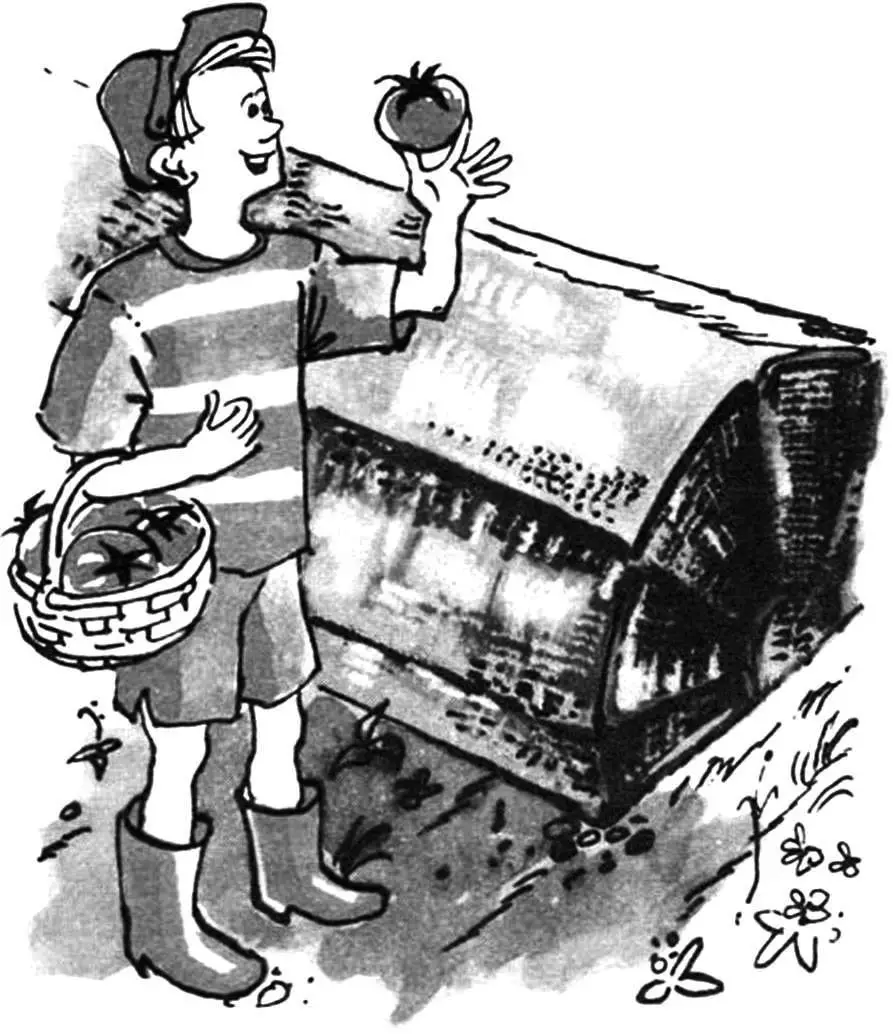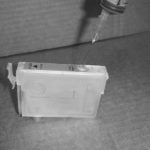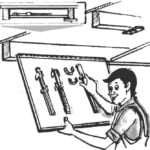Do you build small greenhouses on your countryside plot, or simply cover early seedlings in your garden beds with film? If so, it’s important to make sure such a cover is convenient to use. After all, you can’t even count how many times during the season you’ll need to open and close this transparent “tent.”
The design of the greenhouse proposed by the Hungarian magazine Ezermester perfectly combines ease of construction with convenience of use. Its main feature is that the frame of the film cover folds like an accordion and unfolds just as easily, reliably protecting the plants.
Building the greenhouse’s base frame is quite simple. Four pointed wooden stakes are driven into the corners of the garden bed, and boards are nailed to them to form a box. This box can be filled with a special greenhouse soil mix or used for a regular planting bed.
The frame, however, is a little more complex to make — though still accessible to any gardener.

1 — corner beam of the box, 2 — box, 3 — pivot axis of the disk (M8 bolt, 2 pcs.), 4 — overlay discs, 5 — rear hinged frame, 6 — middle frames, 7 — front frame with overlay strip, 8 — support bar, 9 — frame reinforcement gusset, 10 — rotating discs, 11 — strip for securing the film on the outside of the box’s rear wall.
According to the dimensions of the finished box, four U-shaped frames are made. Their ends are attached to two plywood discs (which should be treated with linseed oil and painted with oil paint to protect from moisture). The discs are mounted on the box base along its longitudinal axis with hinges. This allows you to lift one side of the frame for access to the bed. After work, the frame is rotated back down onto the box, securely covering the plants.
Next comes the film installation — which requires careful handling of both the thin frames and the covering material itself. The film sheet is placed over the prepared frame, adjusted to size, and attached. First, it’s fixed to the back wall of the box, and on the front side — to the first frame of the lowered structure (corresponding to the “greenhouse closed” position). On the frame, the film is secured with an additional overlay strip and small nails. The same method is used for the rest of the frames, all the way to the rear one. Then the ends of the greenhouse are covered: to make this easier, the edges of the film folds are attached to the rotating discs using the same type of plywood overlay circles.

1 — rotating disk, 2 — rear hinged frame, 3 — rear frame hinge, 4 — middle frames, 5 — front frame.
A — frame position with cover raised, B — closed position.
If the film is installed correctly, lifting the front frame causes the entire structure to rotate on the discs toward the rear wall of the box (the film folds on that side, and the rear frame rests on the box). Simply prop the frame in this position with the support bar — and you can work with your plants. Once the bar is removed, the cover frame rotates forward on the discs, and the front frame rests back on the box: the greenhouse is closed.
The frames can be reinforced with plywood gussets fastened to the corners with nails or screws.
Additionally, to increase the size of the working opening when lifting the frame, the rear frame can be attached to the discs with hinges, as shown in the diagrams.



